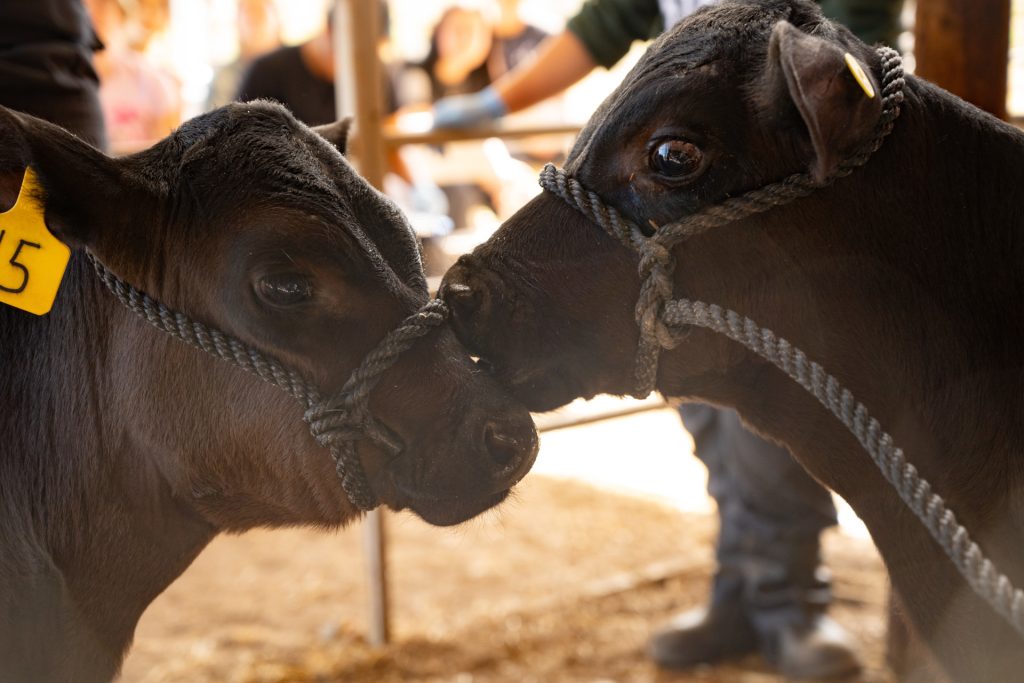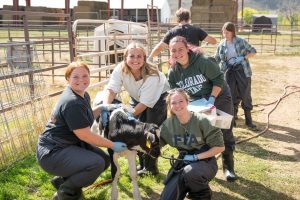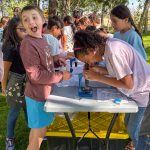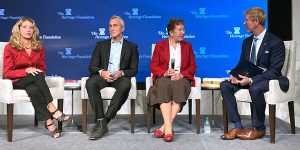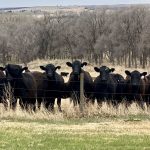The calf connection: Bridging research, learning and student success

Colorado State University
When Catie Cramer was a student of Jason Ahola’s at Colorado State University, neither imagined that one day they would become colleagues. Now, Cramer, an associate professor in the Department of Animal Sciences, and Ahola, a professor, share a passion for research and student success. At the heart of their connection are dairy calves — a gateway to food animal experience, a research opportunity for students and faculty, and a meaningful part of Cramer and Ahola’s own professional growth.
“Many of our students have no experience with food animals and, with our dairy calves, they get a start through bottle feeding them and interacting with them overall,” Ahola said. “Calves are very calm, and you can see how the students look forward to time with them because of how relaxing it is.”
From there, that comfort level has taken work to different levels. “It has progressed to students studying the calves’ weight gain, health and blood samples,” he said. “Some student researchers are looking at the microbiome, compiling the data to make conclusions.”
In fact, Cramer, Ahola and others did research into the impact of supplementing colostrum replacer on dairy calf behavior.
“A graduate student working on a master’s degree, Malei Tipton, and another Ph.D. graduate student, Cesar Velasquez-Rios, looked at how extended colostrum feedings influenced calf health and growth and behavior,” Cramer said. “We’ve seen benefits from extended colostrum feeding in reduced diarrhea and improved growth, but behavior has not been looked at before. And we found the supplement didn’t have a negative impact on behavior. It’s vital because behavior is an important indicator of comfort and animal welfare and it can tell us how that calf is responding to that supplementation. We used technology called HOBO data loggers, which attach to a calf’s hind leg to measure lying time, standing time, the number of lying bouts and bout duration, to see behavior.”

TRANSPORT STRESS
Next, another major area of research will be tackled. “In Colorado, many male calves are actually shipped to other states and that can be a stressful situation for them,” Ahola said. “The students’ part in this will be measuring how calf age impacts how calves cope during transport. This is an example that can have students thinking about how many different ways industry is affected and come up with their own experiments as well.”
Ahola enjoys concentrating on food animals partly because it is an untapped resource for students in terms of having a choice of a future career.
“For example, there are many veterinarians for cats and dogs, but there really is a shortage that are available for food animals, particularly in a rural setting,” he said. “With this knowledge students are getting, they will have more choice, which can make a big difference in the twists and turns of a career. The more real-world experiences we give them, the more it can translate into production and animal agriculture, hitting everything from animal husbandry to health management and nutrition and beyond. It’s also very attractive to students not from the state to know that we will give them the hands-on knowledge that maybe more Colorado-based students might have. Also, let’s give them business sense by understanding what makes an overlooked opportunity.”
It all gets further into the heart of an important concern for Ahola and Cramer: student success. In fact, they have been partnering on research and offerings to better support students.
“Twenty to 25 percent of students are leaving the major and we are finding many in that group are failing right away,” Ahola said.
Cramer and Ahola are advising M.S. student, Malei Tipton, who is leading a project looking at surveys from around 500 students. They found that students’ high school GPA, students’ perceived adequacy in study skills, and their involvement in extra-curricular activities influence their final course grade during their first semester in Animal Sciences at CSU.
“Often when they are already flunking, it’s already too late,” Ahola said. “We have started doing four-week workshops at the beginning of the school year where we teach them note-taking, do mock tests to teach them how to take tests better and work with them on being less intimidated socially,” he said. “High schools miss helping students with some of these skills and many students are suffering in silence. This is helping students be much more positive and feeling armed with the tools that they can succeed and feel that we’re all in this together.”
RESEARCH OPPORTUNITIES
Cramer and Ahola also are focused on keeping and expanding the research opportunities for students in their courses for the same reason of keeping them on track. “We know from our data in our department and STEM discipline research that providing meaningful experiences, especially participation in research, help students be successful during and after college,” Cramer said.
Ahola and Cramer were lucky in that they received an early bond with food animals. For Ahola, it was working in seventh grade on a dairy farm near where he grew up in Connecticut, feeding calves and assessing their health.
“I was paid but it didn’t feel like a job with how much fun it was,” he said.
For Pueblo native Cramer, it was a high school course associated with FFA that gave her a chance to work with calves and adult cattle. Cramer further credits her professors at CSU, including Ahola, for her growth.
“I was fortunate to start off as his student and now working together is a lot of fun,” she said.
Both of them want present and future students to find their passion, along with a meaningful career.
“I really feel it’s our responsibility to give them hands-on experiences and help them develop as scientists and people so they can fulfill their goals” Cramer said. “They need to know we’re behind them. With interesting research, expressing that we care about their success and backing it up with action, that can make a difference. There are great careers out there — we want to help them get one.”
